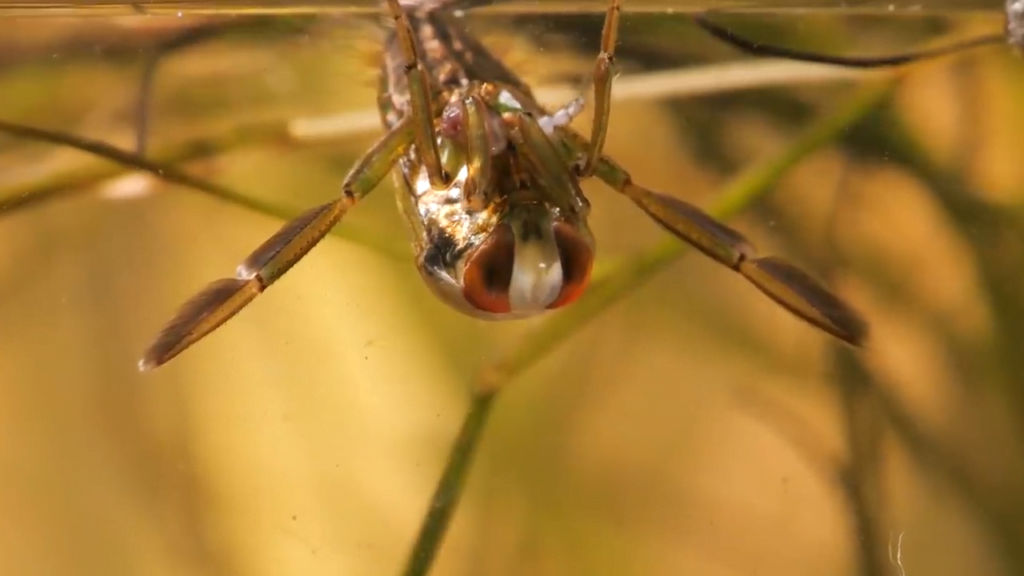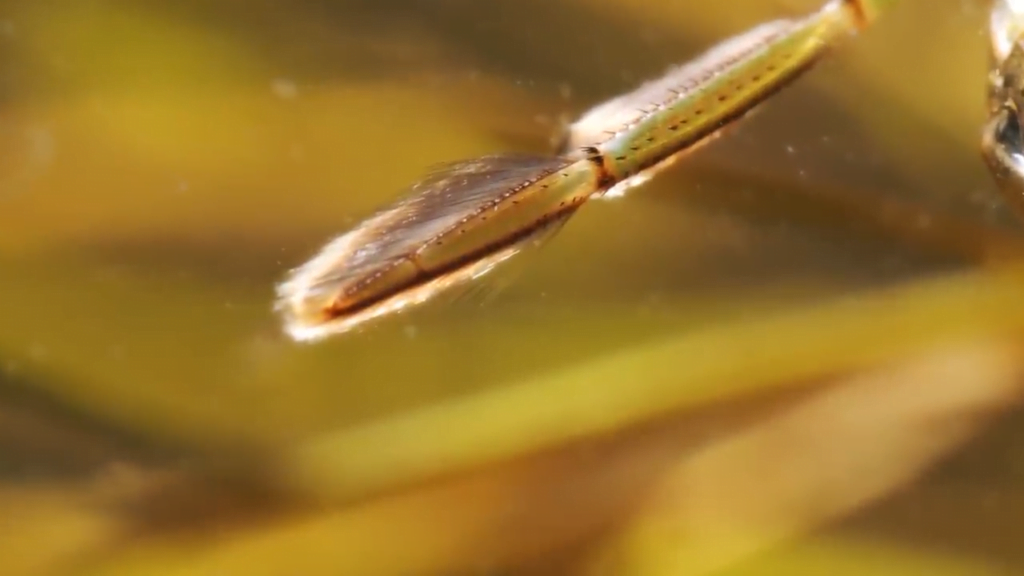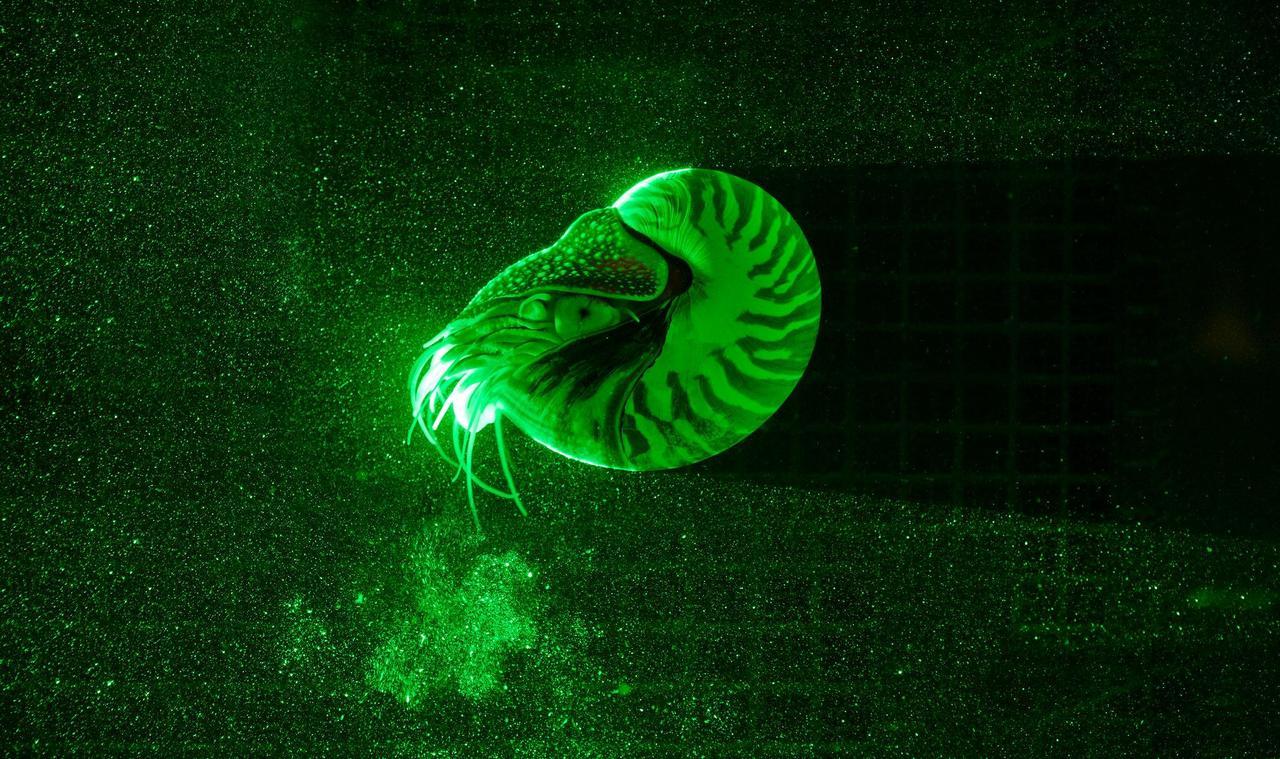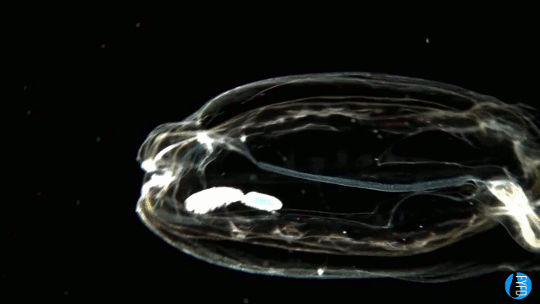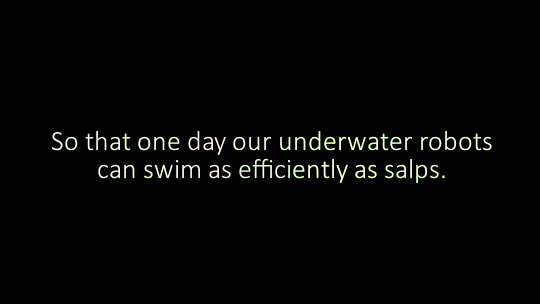
Nature’s smallest water-walkers use surface tension to keep themselves afloat. This includes hundreds of species of invertebrates like insects and spiders as well as the occasional extremely tiny vertebrate, like the 2-4 cm long pygmy gecko shown above. These animals typically have very thin parts of themselves touching the water – like the spindly legs of the water strider. These skinny appendages curve the air-water interface and that curvature, along with the water’s surface tension, generates the force supporting the animal.
Staying afloat on surface tension does little good if a raindrop or passing splash submerges these tiny water-walkers. To avoid that fate, these animals are also hydrophobic or water repellent. This adaptation keeps them from drowning and helps them enhance the curvature where their feet meet the water.
Those tiny indentations can also be important for the animal’s propulsion. Water striders, for example, use their long middle legs like oars to propel themselves. Any rower will tell you that sticks make poor paddles – they’re just not good at transferring momentum to the water. But curving the surface and then pushing off that curvature works remarkably well. It’s how the water strider creates the vortices in its wake in the image above.
For more on water strider propulsion, I recommend this Science Friday video. If you’d like to see the gecko in action, check out BBC Life’s “Reptiles and Amphibians” episode, which is available on Netflix in the U.S. (Image credits: pygmy gecko, BBC; water strider, J. Bush et al.)
This week FYFD is exploring the physics of walking on water, all leading up to a special webcast on March 5th with guests from The Splash Lab. You don’t want to miss it!



